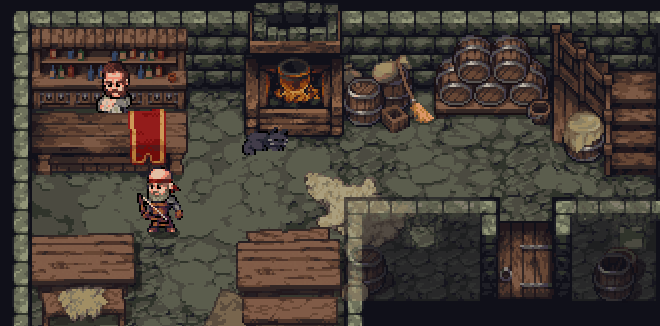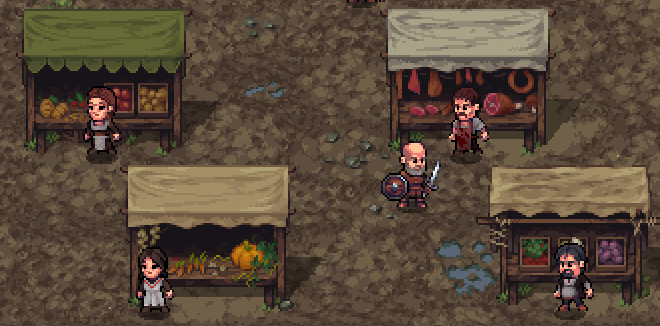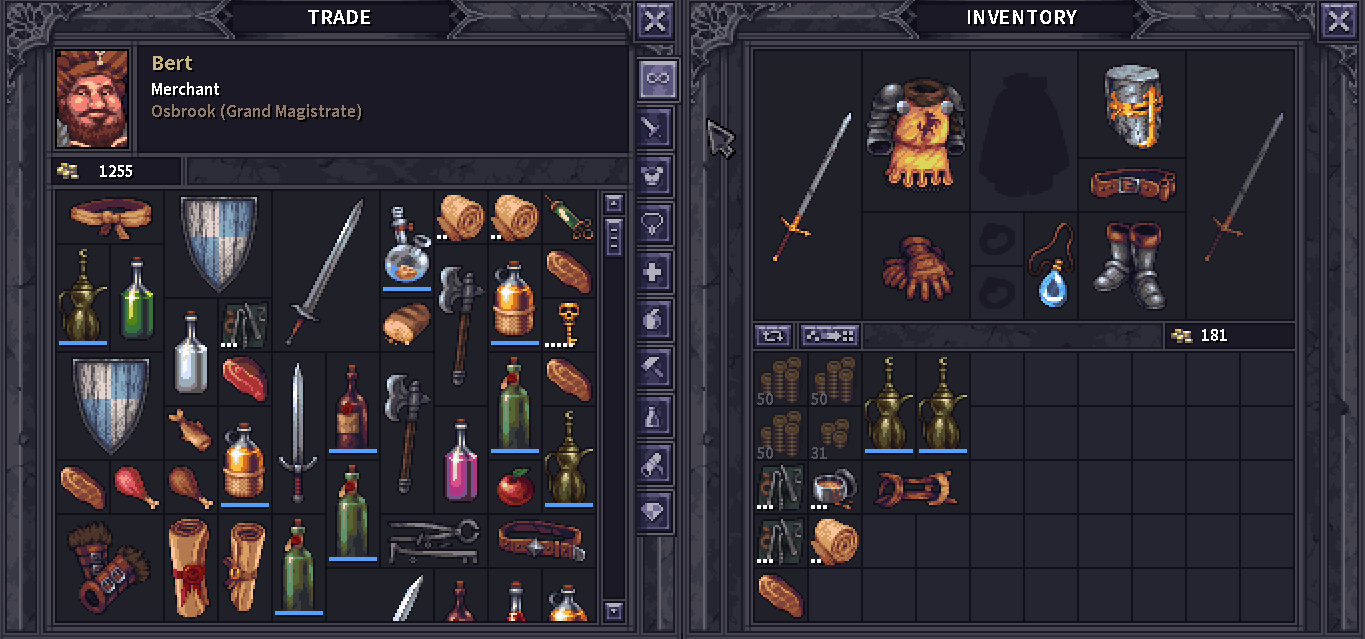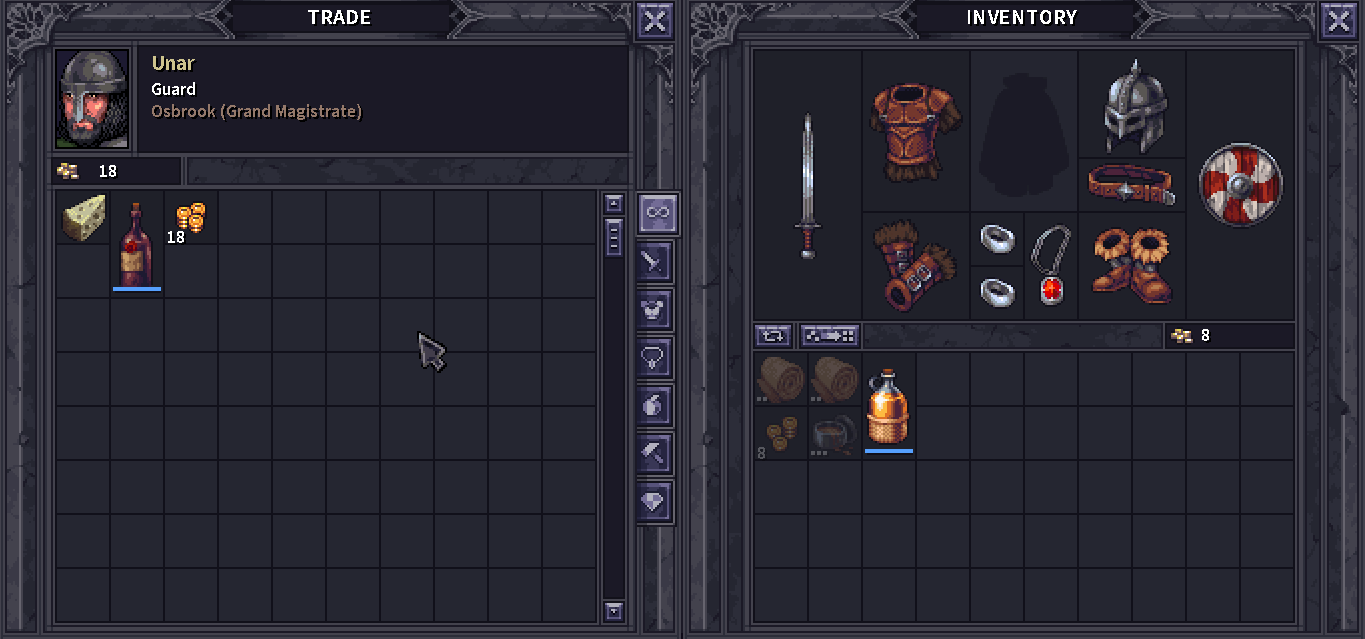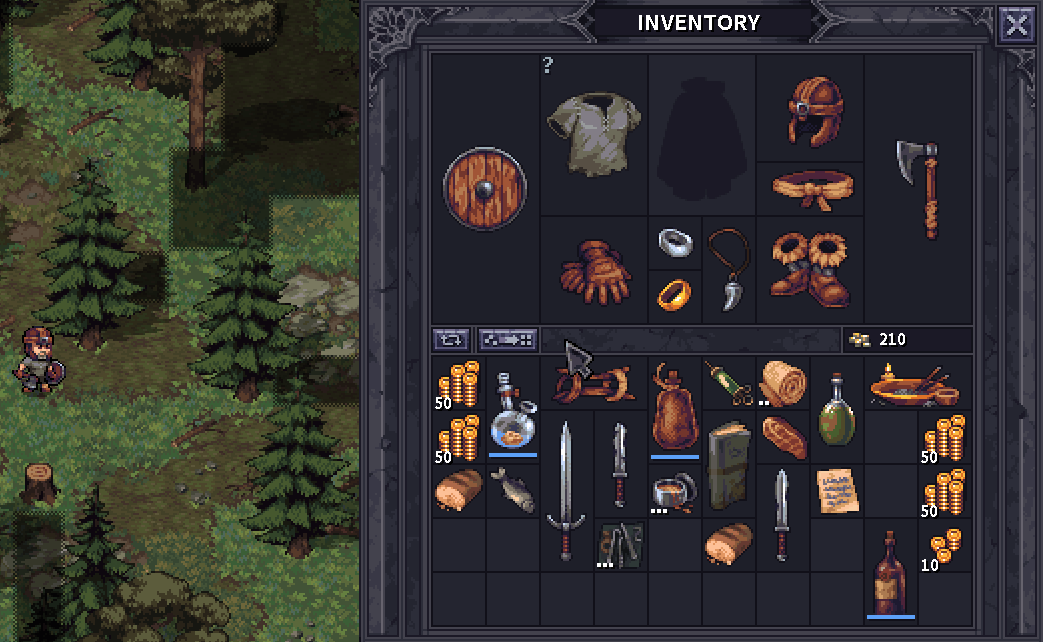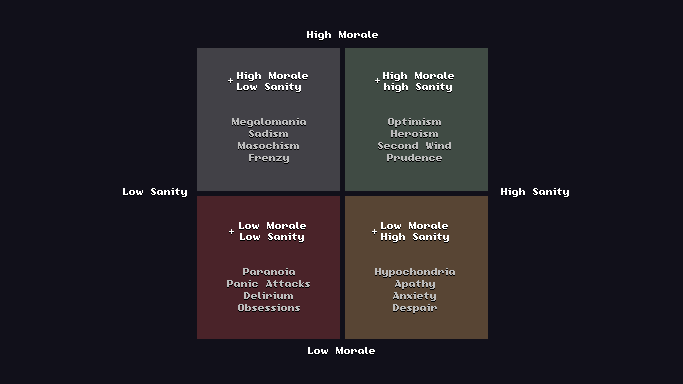
Apr 24, 2019
Stoneshard: Prologue - Wayfinder

Hello!
In this post we will continue to reveal the lore of Stoneshard. If in the past devlog we told about the different factions of Aldor humans, this will be about other races: elves, dwarves and orcs. Though they won’t be factions you can maintain relationships with in the full game (because of fewness and remoteness of the dwarves and elves, and total hostility of the orcs), they’re still an important part of our setting. It is worth recalling that elves and dwarves will also be playable races alongside with humans.

"If you stumble upon a dwarf who isn’t willing to start a fistfight right off the bat, look at him more closely. My best guess - he's probably dead for a couple of weeks."
- Jurg the Innkeeper’s favorite joke
Once the Fjall mountains were a birthplace of a prospering dwarven kingdom, famous for its skillful craftsmen and stonemasons. Dwarves carved many cities in the rocks and connected them by a network of mountain roads – truly a miracle, considering Fjall’s harsh climate and difficult terrain.
However, Fjall crumbled to dust – and the dwarves were forced to leave their mountain vaults in search of a better life on the surface. Little is known about the last days of the once great kingdom, but in the dwarven sagas one often hears the mention of the Exodus, the Extinct Flame and the Great Famine –whatever that means.
Descended from the mountains to the frozen wastelands, those who survived Exodus quickly became savages. Spacious stone passages were replaced by huts and dugouts, skillful jewels – by hides and furs, and the famous smelting halls – with bonfires and primitive furnaces. Ancestors heritage was almost completely forgotten – as well as the spirit of unity once inherent in their folk. Forced to compete in order to survive, the dwarves divided into many fiercely warring tribes. The most numerous ones are Draggar and Ska’ar.
Draggar dwarves have earned notoriety for their passion for pillage and raids – alongside with other dwarven tribes, northern Aldor suffers the most from it. But because of this, they’re also known as dauntless and ferocious warriors. Aldorean nobility gladly hires them to their service – for a decent fee, the Draggarians will fight fiercely even against their own former brethren.
Ska’ar dwarves are more peaceful. They spend most of their lives on the high seas, tracking down all sorts of sea monsters and leviathans. Gathered meat and blubber is enough to survive even the longest winters, and skins and bones are used to make surprisingly durable weapons – some Ska’ar masters wares can compete even with their steel counterparts.
In Aldor dwarves could be met, but very rarely – small communities of dwarven folk can be found only in several northern settlements. These villages are also a common meeting points for Fjall traders and hirelings, who often stop by to exchange pillaged loot for human materials and supplies.

"You better be eating that damn soup, Bertie, or else I'm calling the orcs!"
- Unknown peasant mother
In ancient times the entire territory of Aldor was densely covered with a thicket. For centuries people conquered forest lands inch by inch for their settlements, fields and pastures. However, there were those who resisted the new ways, sparing neither themselves nor the newcomers. These tribes, known as the Forest Folk, were numerous once, but now only three of them remained - and one of them is the orcs.
Orcs are the most powerful, hardy and mysterious inhabitants of the Aldorean woods. If you ask any peasant whom he fears the most, the answer most likely will be “orcs”. Common folk, forest patrols and unruly children - everyone fears the orcs alike due to their unfathomable mysticism, disgusting rituals and inhuman cruelty.
Perhaps they would not have caused such terror, if at least it was known what makes them tick and what gods do they worship. However, it remains a complete mystery, and their actions seem to be absolutely devoid of any logic, moved only by meaningless violence – which makes them even more frightening.
Though orcs remained a serious threat to the people of Aldor for many years, they did not show themselves too actively. Devastating raids and forays happened from time to time, but rather rarely – most of the time orcs seemed to be unwilling to leave their native forests. However, everything changed in the last year, when a certain shaman managed to unite orcish tribes and declare the Sacred Warpath. Aldor, completely devastated by civil war, had troubles organizing resistance during the first months of the incursion, so orcs managed to won back over the centuries of persecution, laying waste to many peaceful settlements.
In six months the orc advance was finally stopped. But as long as the grandees of the Council and the Magistrate vied with each other in bragging about their merits in saving Aldor from orcs, the border guards are preparing for the worst: as the soldiers say, “it’s not us who stopped them; they just stopped attacking.” Who knows – perhaps after this sudden respite, Aldor will have to face an even more ferocious onslaught. There’re rumors of some weird, chaotic piles of branches, animal bones and human bodies found in the forests all across Aldor – so orcs must be really getting ready for something...

"Damn, I’m dying to see those pointy-eared bastards finally invading our good ol’ Aldor. Would be a bloody good reason to hang all those hagglers…"
- Some Brynn citizen expressing famous southern hospitality toward local elven merchants
If the traveler thinks of setting off in the direction of the rising sun, crossing the mountains, and then the eastern steppes and deserts, sooner or later he will find himself in the Jacinth Kingdoms – the great elven empire, occupying endless expanses.
Few people have visited Aldor – however, those very few who can boast of such an adventure, tell of many small kingdoms and principalities united under the rule of a single despot. Desert oasis cities, quaint temples-fortresses far to the east, and even steppe elves nomadic caravans – Jacinth is manifold.
Thanks to the undivided power over the most of the known world, Jacinth managed to accumulate untold riches - some of which he lets on for further expansion. Some princes became elven vassals voluntarily; some were bribed by generous gifts. The fate of the most stubborn was unenviable – so far no one has been able to hold back the might of a thousand elven armies.
Recently, as the peace in Aldor is becoming more and more fragile, Jacinth is apparently very willing to do anything to us this moment of weakness to get the local lands in its sphere of influence. Elven mounted scouts are more and more often being spotted on the borders, and elven goods have recently flooded the markets – which is unusual at the very least for a war-torn country. Evil tongues claim there’re reasons behind this – as they say, the Magistrate nobles are ready to do anything to enlist the elven support to win the civil war.
In Aldor itself elves are not uncommon, especially in large cities, where they are often make successful merchants, jewelers or mercenaries. The largest diaspora resides in Brynn, where one can found an entire elvish quarter. Those elves who reside in Aldor are very similar to humans in terms of culture, but they are still treated with suspicion and open hostility – which is greatly facilitated by the spreading rumors of their Jacinth collaboration.
======
Also you can follow us on:
https://store.steampowered.com/app/625960/Stoneshard/









